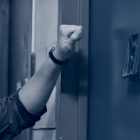
Major Layoffs Expected for New Orleans’ Juvenile Court in 2013
|
Massive cuts are expected for New Orleans’ Juvenile Court, with more than 30 employees expected to be removed from the city’s payroll in early 2013. More than a third of the court’s funding was recently slashed, Chief Judge Ernestine Gray told WWLTV, with more than $800,000 recently removed from the court’s former budget of $2.7 million. Reserve funds will be used to keep recently laid off employees available as contracted workers, although Judge Gray said that such funding will likely be expended before next year. “If we have the same situation from the city and the mayor next year for our budget,” she said, “I don’t know how we operate in 2014.”
The funding cuts were authorized by the New Orleans City Council, at the behest of Mayor Mitch Landrieu’s administration, who told the council that New Orleans had a larger judicial bench than necessary for the city’s workload. New Orleans Chief Administrative Officer and Deputy Mayor Andy Kopplin said that since the workload for the city’s juvenile court has decreased, while the city’s municipal court workload has increased, he considers the funding cuts to be appropriate.








